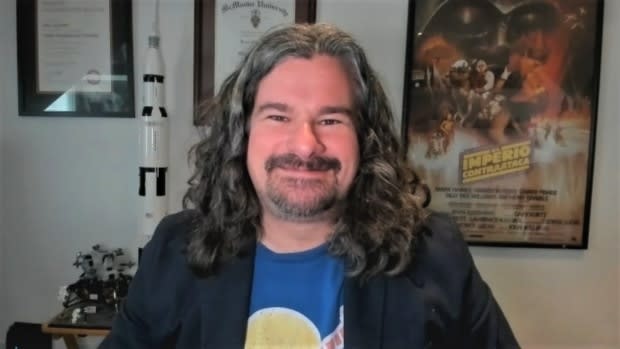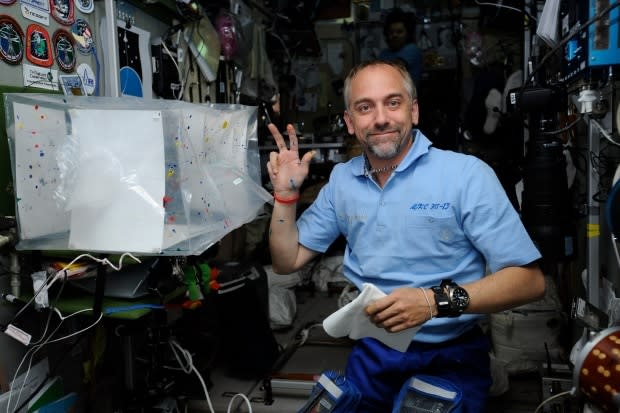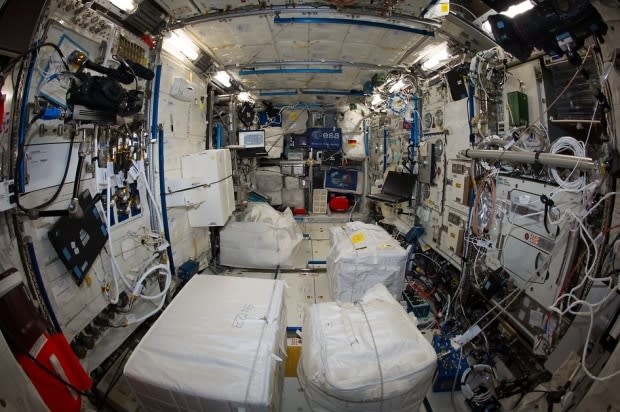Mission Possible: How Tom Cruise's plan to film in space fits NASA's trajectory
As two American astronauts get set to lift off into history on the first privately built rocket ship on Saturday, Hollywood actor Tom Cruise is preparing his own launch into the record books.
The 57-year-old action star is preparing for a feature length film to be shot on location in the International Space Station and directed by Edge of Tomorrow filmmaker Doug Liman. NASA and SpaceX will be collaborating on the venture.
For an actor known for performing his own stunts, space represents the final frontier of Cruise's career, said film critic Jason Gorber.
"His entire brand is for him as an action hero to bring us along for the journey," he said. "We need to see him struggling. We need to see him running with his hands pointed."

Indeed, as Cruise has gotten older he's focused less on the acting feats that brought him to Hollywood's attention and more on daring widescreen stunts.
For Mission: Impossible - Rogue Nation Cruise hung off the side of an Airbus cargo plane as it lumbered into the sky. In his most recent film, Mission: Impossible - Fallout, Cruise broke an ankle while filming a rooftop chase scene. In the footage, Cruise can be seen hitting the side of the building, pulling himself up and hobbling forward to finish the shot.
In a world where computer graphics make such self-sacrifice unnecessary, Gorber said we crave reality even more.
He said the actor's approach is, "'I'm going to put myself in danger for your entertainment,' and we get a visceral thrill from that."
Boldly filming in zero-G
Up until now, the closest Hollywood has come to portraying the effects of space would be the 1995 film Apollo 13. For the movie starring Tom Hanks and Kevin Bacon, director Ron Howard shot scenes of zero gravity by filming short excerpts in NASA's KC-135 aircraft. By flying in a parabolic arc, the Boeing jet creates the feeling of weightlessness 25 seconds at time. In the end the cast and crew of Apollo 13 logged 612 zero-G flights.
WATCH | Bill Paxton, Tom Hanks and Kevin Bacon try a test flight aboard the "vomit comet":
While shooting in space seems the apogee of Cruise's ambitions, it's also a sign of an increasing level of openness from NASA itself. In recent years there's been a new wave of films about space exploration made with administration's co-operation, such as The Martian, the Apollo 11 documentary and the Ryan Gosling film First Man.
In 2017 alone, NASA was involved in a record 143 documentaries, 25 feature films and 41 TV programs according to NASA's Houston We Have a Podcast. Now with new missions to Mars and the moon in the works, NASA is actively looking for ways to capture the public's attention.
Where space itself is the special effect
While putting a movie star in orbit may help NASA, it also fits the current trajectory of big budget blockbusters. As smaller films move to streaming services, the big screen has become the realm of so-called "event" films, the kind of movies that simply have to be seen in a theatre.
"We live in strange times where the entire theatrical experience is undergoing enormous stress," Gorber said. "But one thing that brings people in is spectacle. What better spectacle would there be than Tom Cruise floating in the International Space Station?"
According to reports, there's already a first draft of a screenplay for the space film, but no major studio attached. Even if Cruise finds the financing and books a seat on a SpaceX flight, making a movie in space will be an entirely different kind of mission, said video game entrepreneur Richard Garriott.

He would know. Garriott paid millions to spend 12 days on the ISS, where he created his own short film,The Apogee of Fear.
First there's the environment. Garriott points out space stations are filled with buzzing and humming equipment built to keep humans alive. "Quiet on the set" does not apply.
Then there's the issue of orbital dynamics. While working with the astronauts who appeared in his film, Garriott quickly learned the futility of blocking out a scene.
"If you decide you want to move a foot to the left, you start moving to the left and you keep going to the left because of Newton's laws and mechanics," he said. "Setting up and completing shots is considerably more difficult in zero gravity."
WATCH | Apogee of Fear, the first narrative film shot in space:
But as a son of a NASA astronaut and artist, Garriott is excited about the opportunities. He said private companies such as SpaceX have already dropped the cost of access space tenfold. "As the flight frequency becomes greater it also becomes safer and cheaper. so people can start looking to space to live, work and even create art."
While the idea of escaping the bonds of Earth to sell popcorn might sully the grander mission for some, self-professed space geek Gorber isn't bothered.
"We have always lived vicariously through the adventures of others," he said. "So to have Cruise go up, he's not only doing it for our entertainment, but he's doing it for us, in a true sort of sense."

With both Cruise and director Liman currently committed to other projects, it will be years before the project gets off the ground.
In the meantime, as one of few private citizens who's experienced the awe and isolation of circling 400 kilometres above the Earth, Garriott hopes the eventual film will show viewers the challenges and pleasures of the experience, "And therefore increase their own aspirations to explore."


